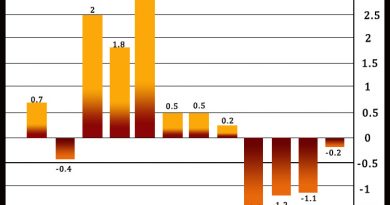This Is the American Town With the Smallest Income Gap
Members of Congress were recently in a fight over whether America’s 700 billionaire families should be heavily taxed. (It is not clear who came up with that number.) Although this will not become law, there have been proposals for years to tax the country’s high-income people to lower the burden on the middle class and provide more federal assistance to the poor.
Wealth in America is highly concentrated. The top 10% of Americans based on net worth control 70% of the nation’s wealth. There is evidence that this chasm has grown over time and will continue to widen. The statement that “the rich get richer” has never been more accurate.
Using data from the U.S. Census Bureau’s 2019 American Community Survey (ACS), 24/7 Wall St. identified the U.S. towns with the smallest income gaps. Towns are ranked by their Gini coefficient, a measure of income inequality based on the distribution of income across a population on a 0 to 1 scale (0 representing perfect equality and 1 representing the highest possible level of inequality). For the purposes of this story, towns are defined as any place covered by the census with populations between 1,000 and 25,000.
Among the towns we considered, Gini scores range from 0.296 to 0.212, well below the national Gini coefficient of 0.482. The places on the list span the country but tend to be concentrated in the South. However, Illinois and Minnesota are each home to four towns on this list, more than in any other state.
The causes of rising inequality are complex and varied. A report published by the National Bureau of Economic Research ties the rising disparity to a range of economic factors, including globalization, technological advancement, a stagnant minimum wage and the decline of labor unions.
The town with the smallest income gap is Elko New Market, Minnesota. Here are the details:
- Gini index: 0.212
- Average household income, top 20%: $220,043 (1,995th highest)
- Average household income, bottom 20%: $74,667 (seventh highest)
- Share of all income that went to top 20%: 32.5% (the lowest)
- Share of all income that went to bottom 20%: 11.0% (the highest)
- Median household income: $123,294 (507th highest)
The Gini Index of income inequality summarizes income dispersion in an area. A value of 0 indicates perfect equality (everyone in the area receives an equal share of income). A value of 1 indicates perfect inequality (only one recipient receives all the income).
The census “place” geographies included 29,573 incorporated legal entities and census-designated statistical entities. Of those, 29,320 had boundaries that fell within one of the 50 states or the District of Columbia. Then, 13,332 places fell within 1,000 to 25,000 people thresholds that defined towns. Towns were excluded if the Gini Index was not available in the 2019 ACS, if there were fewer than 1,000 housing units or if the sampling error associated with a town’s data was deemed too high.
The sampling error was defined as too high if the coefficient of variation (a statistical assessment of how reliable an estimate is) for a town’s Gini Index was above 15% and greater than two standard deviations above the mean coefficient of variation for all towns’ Gini Indexes. We similarly excluded towns that had a sampling error too high for their population, using the same definition.
The remaining 7,698 places were ranked based on their Gini Index. To break ties, we used the share of aggregate household income earned by the top 20% of households.
Additional information on average household income by quintile, share of aggregate household income by quintile and median household income are also five-year estimates from the 2019 ACS.
Click here to see all the American towns with the smallest income gaps.
Get Our Free Investment Newsletter
Source: Read Full Article


